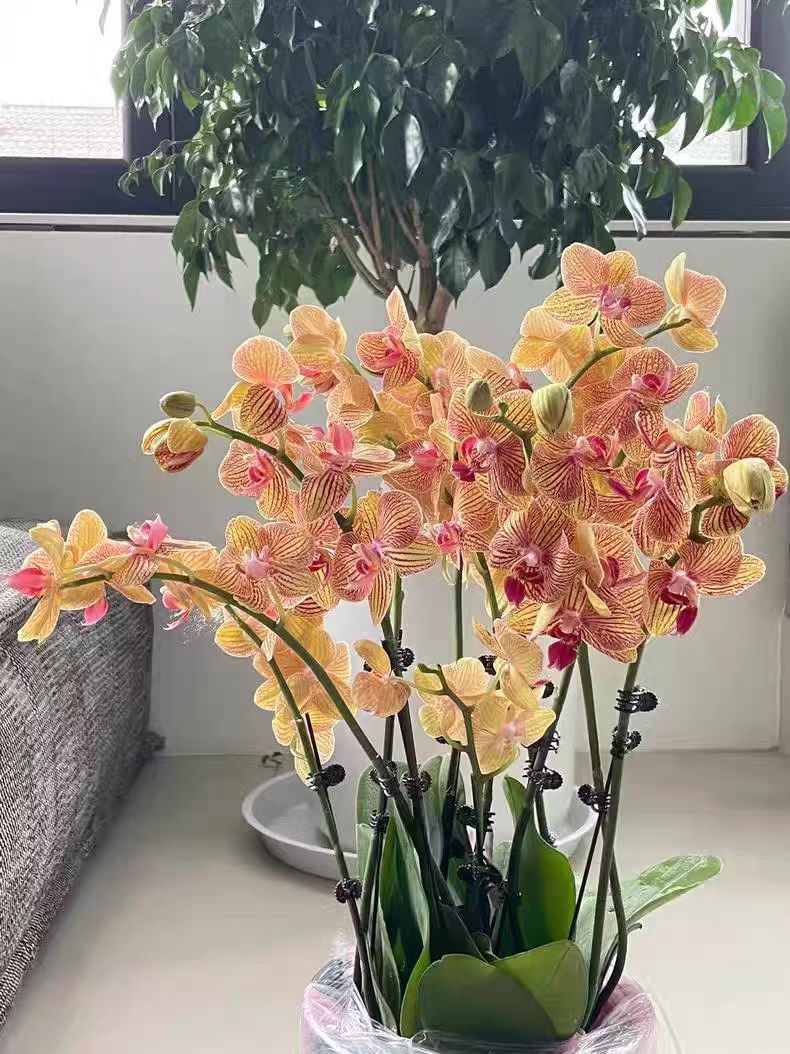In the process of phalaenopsis cultivation, many flower lovers may encounter a troublesome problem - the roots of phalaenopsis emit an unpleasant odor. This odor not only affects the indoor environment but also implies potential health risks for the plant. To effectively solve this problem, it is necessary to first identify the root cause of the odor and then "prescribe the right medicine".
The most common cause of root odor is waterlogging and root rot. Phalaenopsis is an epiphytic plant, and its roots require good air permeability. If a substrate with excessive water - retention capacity (such as ordinary garden soil) is used, or if the substrate is kept wet for a long time due to frequent watering, the roots will suffocate due to lack of oxygen. Then, anaerobic bacteria will multiply in large numbers, decompose the rotting root tissue, and release a pungent sour or putrid smell. In addition, improper fertilization can also cause odor. Excessive application of un - fully - decomposed organic fertilizer or root burn caused by excessive concentration of inorganic fertilizer will also lead to root rot and thus produce odor. Moreover, when phalaenopsis is attacked by pests and diseases, especially when root - rot disease, root - knot nematodes, etc. endanger the roots, the normal structure of the roots will be damaged, leading to rot and odor.
Once an unpleasant odor is detected in the roots of phalaenopsis, scientific treatment measures should be taken in a timely manner. First, remove the plant from the pot and check the roots. Carefully take out the plant from the flowerpot, gently shake off the substrate on the roots, and observe the state of the roots. The healthy roots of phalaenopsis are white or light green and tough in texture. If the roots are black, soft and accompanied by an unpleasant odor, it indicates that rot has occurred. Use sterilized scissors to completely cut off the rotted parts until the healthy tissue is exposed. After pruning, apply carbendazim, plant ash, etc. to the wound for disinfection and sterilization to prevent the wound from being infected.
After pruning, the substrate of phalaenopsis needs to be re - treated and the pot needs to be changed. The original substrate may contain residual pathogenic bacteria and harmful substances and is not suitable for continued use. Special orchid substrates with good air permeability and water permeability, such as sphagnum moss, bark, coconut coir, etc., should be selected. These substrates can not only provide sufficient oxygen for the roots but also effectively avoid waterlogging. When changing the pot, choose a flowerpot of appropriate size with drainage holes at the bottom, and replant the treated plant. Note that it should not be buried too deep to ensure smooth root respiration.
Subsequent maintenance and management are crucial for preventing the recurrence of root odor. Watering should follow the principle of "watering when the soil is dry and keeping it moist". Adjust the frequency according to the season and environment. In spring and autumn, water once every 5 - 7 days. In summer, due to high temperature and fast water evaporation, water once every 2 - 3 days. In winter, the plant grows slowly, and watering once every 10 - 15 days is enough. Each time, water thoroughly but avoid waterlogging. In terms of fertilization, choose special slow - release fertilizers or thin liquid fertilizers for orchids, and apply them in an appropriate amount according to the instructions. Avoid concentrated and un - decomposed fertilizers. At the same time, place the phalaenopsis in an environment with good ventilation and bright light but avoid direct sunlight. Good ventilation can reduce air humidity, reduce the growth of pathogenic bacteria, and promote the healthy growth of the plant.
The appearance of odor in the roots of phalaenopsis is a "distress signal" sent by the plant. As long as we master the correct treatment method, save it in a timely manner, and take good care of it in daily maintenance, we can help the phalaenopsis recover to health.
How to Deal with the Unpleasant Odor of Phalaenopsis Roots?

Share with
Tagged in :




Leave a Reply